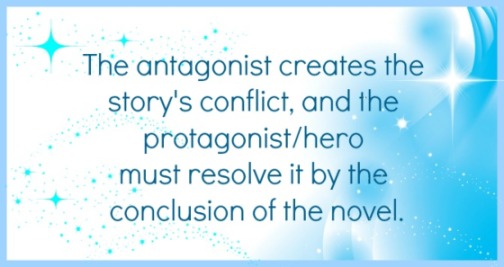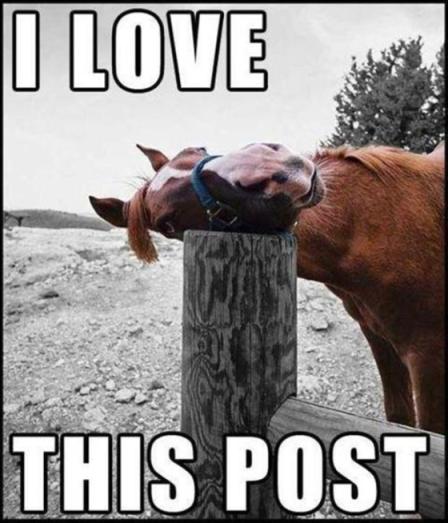by Joanne Wadsworth | Jul 28, 2013 | Author Blog

Conflict. Yep, I’m feeling this driver’s conflict.
This week I’ve begun writing my next novel. I’m extremely creative when it comes to the writing process. Usually I allow my stories to unfold as the characters drive their story along, although I’ve also learnt the importance of laying out core plot issues.
So, what’s one of the most important plot issues you need to consider when beginning your novel? Yes, that’s creating conflict. Here are some key pointers to guide you along the way:
- CREATING CONFLICT
- You need to ensure your conflict is sound.
- It needs to be paramount within your story.
- Conflict forces your characters to act.
- Strong conflict leads to greater opportunities for your characters.
- And ramping up the stakes with that conflict drives your reader to care about the outcome.
Now to cover a little bit more about creating conflict.
- THE ANTAGONIST
- Who’s your antagonist?
- Or in some cases what’s the antagonist? There are of course stories where the antagonist becomes the obstacle the hero or heroine is trying to overcome.
- Usually the antagonist brings the conflict to the forefront.
- Focus on that conflict.
- Infuse your story with scenes driven around that conflict.
- Also, allow your characters to experience heightened emotions as they deal with the powerful conflict you’ve put in place.
- Don’t forget increasing the stakes engages your readers.
- It compels them to keep reading, and to find out what happens next.
- THE HERO/HEROINE
- The hero/heroine must come into contact with the conflict you’ve put in place.
- Throw the conflict/challenge at them.
- Force them to face their fears.
- Allow the actions of your characters to burst off the page as they rise to the challenges you’ve set them.
- Because higher stakes equals page-turning action.
Hopefully some of these pointers have provided inspiration. Lastly, let me share the one thing I always keep at the forefront of my mind as I’m writing. I’m actually whizzing it up into a nice graphic for those who’d like to print it off.

If you want to drop me a comment, make sure you do. Perhaps you have other pointers you’d like to add to mine. I certainly hope the ones I’ve mentioned have got you thinking. Happy writing, everyone. Create that conflict. 
Stay safe. I’ll catch ya later.

PROTECTOR > BUY THE BOOK: Amazon / Barnes & Noble / Lyrical Press / iTunes / Kobo

by Joanne Wadsworth | Jul 9, 2013 | Author Blog

Sooo true. 🙂
The most important thing I’ve learnt, is if I want to become a successful writer, there’s one thing I must do.
You’ve probably guessed it, right?
It’s write. Write. Write.
Writing one book won’t bring in the bucks.
Writing two probably won’t either.
Oh, but having three, now that’s usually the turning point.
Yep, I’ve heard a lot of authors, as well as professionals in our industry, say with an author’s third book’s release, comes the change we’re all after — an increase in readership numbers. As writers, that’s what we’re all after. We want our books to be read, for people to enjoy them, to embrace our stories as we have.
So, I’m counting down those days. My second book, WARRIOR, releases in only eight weeks. My third book follows a few months after that, and my fourth, in the first half of next year. And so it shall go on…
Or at least that’s the plan. Within another week I’ll have my fifth novel completed, and I’ve already begun work on my sixth. That’s right. I’m writing. Writing. Writing.
Even my hubby can’t keep up with which book I’m currently talking about when I mention my schedule. He’s like, “Ah, so which one is that? I’m getting lost.”
I jumped up and down the first time he said it, because that means I’m heading in the right direction.
So how about you? How’s your writing going? Perhaps you’re still working on getting to publication? Or maybe you’re there. If so, how many books do you have out? Did that third book see you hit a turning point in an upward direction? Or are you still heading there like I am? I love hearing from you, so drop a comment and let me know.
And lastly, I’d like to announce the winner of “The 4th of July Blog Hop.” That’s Katie Cross. I’ll be getting in touch with you to organise your e-copy of PROTECTOR. Congratulations, Katie.
Have a fabulous week everyone.

PROTECTOR > BUY THE BOOK: Amazon / Barnes & Noble / Lyrical Press / iTunes / Kobo

by Joanne Wadsworth | Jun 17, 2013 | Author Blog

I hope you do too. 🙂
I love when I’m reading and a new location comes into play within a scene. The visual description the author brings to the reader is so important. And as writers we have ensure we cover all the elements we need for the reader to have the same image in their mind that we do in ours.
Each time I have to describe a new location, from a simple passageway, to a bedroom, or a sweeping panorama, I ask myself the following questions.
- What are 2 to 4 key components of this place? These are the items which stand out with clear emphasis. Use more if you need them.
- What are 1 to 3 small features that will take this description and make it something special? Examples of this are like the stitching in bedcovers, the fabrics used on furniture, or a cobweb in the corner of a room. Find something unique that will push your description in the direction you want it to go.
- Is this place important? What’s its history? (Sometimes, only the author needs to know this question, but there are times when this is shared with the reader during the description because it’s important to the storyline.)
- Remember the five senses. Sight, smell, taste, feel and speak.
- And ensure you show your reader what you’re seeing. This is so important.
Now, not all the answers will be used, but most of them will within the scene. Most importantly, these detailed descriptions I’m speaking of come when you show your location for the first time. When you bring this same location back in another scene, there will be less description needed because you have already drawn it. So, let’s jump to it and see some examples, because I find it’s so important to add a showing to my posts.
- Example one: To set this scene, the heroine is out riding in the outback.
We rode, our surroundings still beautiful in spite of the harsh drought. Brilliant colors shimmered around us, red the predominant, with the dusty landscape broken by the towering gum trees. Beyond the rocky hills, the Ridge rose steeply to meet the rich blue of the sky. The sight enthralled, because the Ridge was like a slab of stone appearing out of nowhere.
- Example two: To set this scene, the heroine is relaxing on the beach of a small private island with her brother. Here, her brother becomes part of the scene description to describe the relaxed feel of the location.
For miles either side, the land was all high, jagged cliff faces with only one single track leading inland through the jungle. Near the beginning of the track, her brother had slung a colorful hammock and rested, his straw hat drawn low over his head as he rocked in the gentle breeze.
- Example three: To set this scene, the heroine has never been to this place before. She’s walking down a passageway and into a bedroom that’s far more than what she’s used to seeing.
The passageway was wide, yet dimly lit with wall sconces holding candlelike bulbs. She didn’t slow since all the doors were closed, but at the fifth which she’d been told was hers, she halted. The ornate brass knob was curved, and she pushed it open. Wow. The room was three times the size of what she had back home. And from the size of that bed, she’d get lost in it.
She headed across the polished wooden flooring and gripped one of the four carved hardwood posts that rose high above the bed to support a canopy of sheer lace netting. She pushed one corner of the lace aside, and smoothed her hand over the violet silk covers. So pretty, with detailed stitching in mauve and gold thread.
- Example four: To set this scene, the heroine is standing on a rocky cliff face before a large palace.
She stood on the precipice and stared down its craggy side. The ocean was eerily beautiful, almost beyond magnificent in its violent splendor.
Turning on her heel, she saw the palace. Wind whipped her hair about as she gazed up. So unreal. It was four floors in height and constructed of large blocks of gray-black stone. From each of the many corners, a slender tower rose to double the height of the palace, at least a dozen towers visible from her position. This residence was a fortress, although a stunning one with light shining from behind stained glass from the largest of the windows.
So, in writing detailed location descriptions, your goal is to bring your reader into the location you’ve set. Have them standing there, touching, feeling and seeing what you do. I hope you enjoyed this post, and that it aided you in some way.
Have a fabulous week. If you want to drop a comment, make sure you do. I love hearing from you all.

PROTECTOR > BUY THE BOOK: Amazon / Barnes & Noble / Lyrical Press / iTunes / Kobo

by Joanne Wadsworth | Jun 3, 2013 | Author Blog
Random picture alert! Well, kinda.

Do you feel the cat’s conflict? The little mouse on his ear, I’m sure, went flying one second after this photo was taken. Anyway, keep reading, and check out exactly how we as writers, can create tension and conflict in our first five pages, thereby drawing the reader in. (Sorry about the “thereby.” I’m writing historical romance at the moment, and you might find the odd “aged” word appearing within the passages below.) *chuckles*
Greetings my fellow writersHey everyone,
As writers we sometimes struggle with how our story should begin. We want to craft our first few pages in a way that draws the reader in. The last thing we want is for them to set our book down, to forget it, or to never pick it up again. So here, I’ve compiled a list of techniques to aid the writer in crafting a strong first five pages.
Open with a strong hook.
- The first line of your book is crucial.
- The first paragraph even more so.
- And the first scene has to truly pack a punch.
- So, how do we do this? Consider the main point of tension within your first chapter, and ideally try to work your first paragraph around that issue. The key is to captivate your reader into needing to know more. That means don’t go laying out all the facts, but aim to entice.
- To aid you with this, a great way to open your first page is with dialogue. It’s a method which allows you to introduce your main character and highlight the point of tension all in one go. If the dialogue isn’t in the first line, then try to incorporate it in the first paragraph.
Don’t give me thirty characters in the first few pages.
- If there’s one way to turn off a reader, it’s by confusion. Keep it simple. Spotlight your main characters right away so your reader becomes grounded from the start. Allow your reader to focus on them, to form a bond with them, to be invested in them.
- Never forget that when a writer gives a character a name, the reader will automatically store that name, and expect that character to be someone of importance. That means, don’t go naming your non-important characters, and that goes for the entire book. As an example, the waitress who serves you coffee in the café, can just be the waitress.
You have a clever reader.
- This is something I tell myself all the time, but continuously as I write the first few pages. “I have a clever reader.” It means as writers, we need to allow our reader to piece together the story without our continual input. Sure, give small hints, but don’t tell them everything. That way they’ll have a more fulfilling experience as they read right from the very first page.
Reflections.
- Reflections in the first few pages should rarely be written in. This is where the main characters reflect on their life or past situations. They’re getting deep and meaningful, when really you need to highlight the actual tension and conflict of your story.
- Save the reflections for where they’re needed.
Remember most readers will judge a book by its first few pages.
- Generally readers will peek at the first few pages of a book, and based on what they read, decide whether or not to buy it. That means no grammar mistakes are allowed from the very first line. Proofread thoroughly.
I hope you’ve found these tips and techniques helpful. You may even have your own special tip or technique you’d like to add. Drop me a comment and let me know. I love hearing from you guys.
Take care, and I’ll catch ya next week.

PROTECTOR > BUY THE BOOK: Amazon / Barnes & Noble / Lyrical Press / iTunes / Kobo

by Joanne Wadsworth | May 28, 2013 | Author Blog

Now, this is one other-worldly beach I’d like to visit.
Also, stay tuned, because at the end of the post I’m sharing some exciting news on my latest book submission. 🙂
World-building is a subject close to my heart. As a child some of my favorite books transported me directly into the new world the author had built. This started my love for the fantasy, science fiction and paranormal genres. There’s such a magical element to these stories where world-building occurs, and it’s also the ultimate opportunity for an author to allow their imagination to soar.
This imagination though needs a few parameters to keep the author’s world-building realistic and true. So, here are some crucial pointers for those authors wanting to world-build.
- Firstly, determine whether your new world will be present day, futuristic, medieval, etc, and then keep in context the elements available on this planet to sustain it and your characters.
- World-building takes research. You need to have a basic understanding of physics to ensure your invented planet doesn’t stray too far from the believable. Consider how life will be supported. How the society on your new world looks and acts.
- Are the people human or something else? Maybe they’re based on mythology? Whatever you choose, keep in mind how our own world works. We understand the levels of structure. We care for each other, our planet and the animals we share it with. I’m pointing this out so you don’t go creating a world of people who only care about themselves and no one else. That could only lead to the potential extinction of the race you’ve just created.
- Consider elements of travel. Are there space ships? If there are, what means have you provided to source and build these vessels, and then fly them?
- Perhaps you’ve created magical means of travel. If you have, is time-travel involved? How are you going to incorporate this into the world you’ve built?
- What kinds of laws govern this new world? And how do your characters fit into it? What kind of belief system is there? Are there other languages?
Never forget, that world-building can take a little time and practice to get just right. You’re after drawing your reader into a place that could realistically exist. Anything is possible, but it’s only believable if there are sustainable physics behind it. Lastly, get excited, because there is nothing more intriguing than building a new world and bringing your reader along on an incredible journey far beyond our shores. I certainly love where writing fantasy leads me. Oh yeah, our world is no longer the limit.
Lastly, I have some fabulous news, and I feel just like this puppy. I’m on the ride of my life.
And the news: ENCHANTER, book three in my YA (Magio-Earth) fantasy series has gone under contract with Lyrical Press, NY, with a release date of 5th May 2014. I’m beyond excited to see my series take flight the way it has. There are certainly a number of books still to come, each one featuring a different hero and heroine, and all with your favourite characters intermingled within. Huge thanks to the amazing Penny Barber and Renee Rocco of Lyrical Press. Also, a massive thank you to everyone who crossed their fingers and toes for me, for all your supportive tweets, emails and comments. You guys rock!
I wish you all a week as wonderful as mine has so far been, and if you want to drop a comment, make sure you do. I love hearing from you all.

PROTECTOR > BUY THE BOOK: Amazon / Barnes & Noble / Lyrical Press / iTunes / Kobo

![]()






